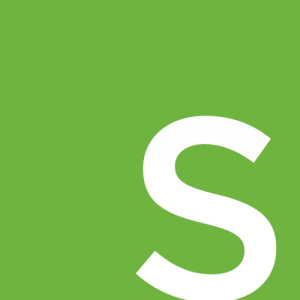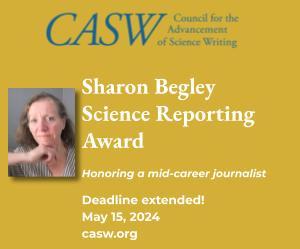The Nominating Committee was called back into service last month because of a mid-term vacancy in the Board and the need to have an interim election.
This unusual situation came about when Rob Frederick left his position as treasurer over the summer because he was running for political office. That left a vacancy in the treasurer position, which the Board was, consistent with the bylaws, able to fill by promoting a sitting Board member, Alex Witze, to treasurer. This, in turn, left a vacancy on the Board.
Now, to fill the empty Board seat, what's needed is a vote of the membership — and any vote of the membership has to be tied to an in-person meeting. The next in-person meeting is the annual membership/business meeting scheduled for:
Saturday, Oct. 28
7:30-9 a.m.
San Francisco Marriott Marquis
Nob Hill Room
San Francisco, Calif.
The Nominating Committee was asked to present an official slate of three candidates, using the same criteria we used for the slate presented for the full Board election in 2016 — an eye toward increasing diversity on the Board and bringing in new people who have not previously served in leadership roles in NASW. The official slate is below, along with the candidate statements.
Members can vote via online proxy Oct. 12-28 or attend the Oct. 28 meeting. Regular NASW members will receive a special online proxy invitation on Oct. 12. Watch for this in your inboxes.
Tinsley Davis, executive director, will do her best to get the votes counted and announced by Sunday, Oct. 29, so that if the winner happens to be at WCSJ, he or she can attend the Board meeting that is scheduled to take place on Monday, Oct. 30.
Thank you,
Robin Marantz Henig
for the Nominating Committee:
Melissa Lutz Blouin
Richard Harris
Virginia Hughes
Rob Irion
Apoorva Mandavilli
Emily Sohn
The candidates, in alphabetical order:
1. Kathryn Jepsen
The NASW community has always pushed me to do better — for myself, for my publication’s team and for our audience. But it wasn’t until 2013 and 2014, when I witnessed NASW’s willingness and ability to mount a robust response to sexual harassment, that I understood the organization’s capacity to improve the science-writing community as a whole.
I decided to get more involved. I took part in the Women in Science Writing: Solutions Summit, where I talked with others about my own experiences with harassment.
On the advice of Laura Helmuth, then NASW vice president, I joined the Finance and Audit Committee. I am now its longest-serving current member, and I use the skills I learned from the committee in my capacity as treasurer for another professional organization, the University Research Magazine Association.
I also became chair of the NASW Internet Committee. Over the last two years, I gathered input and secured full funding and a web design contract for a needed redesign of the NASW website, scheduled for 2018.
I would be honored to continue to contribute to NASW by serving on its Board of Directors.
As someone who entered the field within the last decade, and as someone who works closely with others who are early in their careers, I could offer valuable perspective to the Board as NASW continues to grow and adapt to meet the needs of its members.
Like many NASW members, I have followed an unexpected career path. I graduated with a master’s in journalism from Northwestern University thinking that I would wind up at a journalistic publication. But a professor from my science-writing specialization recommended I apply for an internship at Fermi National Accelerator Laboratory. I got the internship, which turned into a full-time job, which so far has turned into nine years of writing about particle physics at different laboratories, including CERN research center in Europe and SLAC National Accelerator Laboratory in the Bay Area. I am now the editor in chief of Symmetry, an online magazine published by Fermilab and SLAC.
I have tried to use my position both to improve communication about particle physics and to make the field of science communication a better and more welcoming place. I work to diversify the pool of freelancers I hire and ensure everyone receives fair pay. I ask writers to seek out diverse sources for their stories. I consider how the words and images we publish affect marginalized communities.
More than ever, making the community of science writers as inclusive as possible must be a priority for NASW. As a member of the board, I would look for opportunities to support science writers under attack for their identities and for presenting what is true and right instead of performing false balance and neutrality.
I have seen NASW act as a force for good in our community, and I would like to be a part of that. Thank you for your consideration.
2. Barbara Moran
I am writing to request the privilege of serving as a Board member for NASW. I have been a member of NASW since 1996, when I received my M.S. in science writing from Boston University, and a stalwart supporter of the organization since then. Now, as science news battles fake news for headlines, organizations like NASW are critical for providing assistance, guidance, and camaraderie to science writers across the country, and I want to become more actively involved. I am especially committed to NASW’s work that encourages in-depth reporting, supports and protects freelancers, and helps members embrace new media and use it effectively — and ethically — to promote science news.
I am currently the senior science writer and managing editor for Boston University’s research website, which produces feature articles, videos and multimedia displays about BU scientists for external audiences.
In my 20-year career as a science journalist, I have been committed to covering issues of public health, environmental justice and the intersection of science and society. I have written for many publications, including the New York Times, New Scientist, Technology Review, the Boston Globe Magazine and the Hartford Courant, and produced television documentaries for PBS, the Discovery Channel, the History Channel and others.
My first book, The Day We Lost the H-bomb, a narrative nonfiction account of the worst nuclear weapons accident in history, was an Amazon pick of the month when published in 2009, and shortlisted for the History of Science Society’s Davis Award. I have twice received the Science in Society award from the NASW, in 2011 and 2017. I am deeply honored by these awards, which inspire us to the best forms of journalism.
I was a Knight Fellow at MIT in 2001-2002, and have taught science writing at the master’s level for BU. In the spring, I will teach an undergraduate course in health journalism at Boston College.
With my background in print, broadcast, and web news; my experience as an author, a staffer, and a freelancer; and my feet in both “traditional” media and academia, I feel that I represent all members of NASW, as well as the changing face of science journalism. If elected, I promise to be active and engaged in NASW efforts to support members, and encourage excellence in all forms of science communications. Thanks for your consideration.
3. Sandeep Ravindran
I’m running for NASW’s Board in order to increase engagement with our members, provide more avenues for professional development and mentorship, and promote diversity within our field. I became an NASW member in 2009 after completing a Ph.D. in microbiology from Stanford University and realizing I'd rather be a science writer than a scientist. After studying science communication at UC Santa Cruz and working for two years as a PIO for the Proceedings of the National Academy of Sciences, I became a freelancer. I’ve written for a variety of publications including Smithsonian, National Geographic News, Nova Next, Wired, Popular Science and Science News for Students.
As a member of the NASW freelance committee I helped organize the Power Pitch and Pitch Fest events at the past two NASW meetings, and will do so again at the upcoming World Conference of Science Journalists. These pitching events are useful to a broad range of NASW members, from novices looking for a first clip to veterans looking to break into a new market, and I’m excited that this year’s event will include several international editors as well. I am keen to provide more such opportunities for NASW members to develop their professional skills and networks.
I would also like to provide more mentorship and support to those new to our field, particularly with the aim of increasing diversity and giving voice to underrepresented perspectives. I have previously volunteered with the diversity committee and the Science Byline Counting Project, and I think a greater diversity of backgrounds and experiences can only make NASW stronger. I would like to coordinate with and learn from the diversity efforts of other professional organizations to find more ways to promote a diversity of perspectives within our field. I am eager to make a more meaningful contribution to NASW, and would welcome the opportunity to serve as a member of the Board.

.png)

